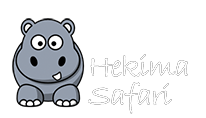
Discover the ultimate month for conquering Kilimanjaro!
Bookings
December 13, 2023

The prime climbing windows for Mount Kilimanjaro are July-August-September and January-February, aligning perfectly with summer and Christmas holidays for many travelers. These periods boast ideal weather conditions, attracting climbers seeking a flawless ascent.
Conversely, the rainy seasons in April, May, and November deter the majority of climbers. The high likelihood of trekking through drizzle poses challenges as rain softens the soil and makes rocks slippery, transforming the climb into a slower and riskier adventure. Despite this, landscape photographers relish Tanzania’s rainy season, capturing the snow-capped peak of Kilimanjaro amidst increased precipitation. It’s a unique opportunity to enjoy privacy on the trails, free from the usual “rush hours.”
The best time to climb Kilimanjaro depends on your preferences and tolerance for weather conditions. Here’s a breakdown of each season:

April-May:
– The “big” rainy season starts, and it’s the coldest period in Tanzania.
– Fewer climbers but a high chance of rain.
June-July:
– Rain frequency decreases; the weather is dry and clear.
– Nights remain cold, but June is quiet, sunny, and underrated for climbing.
– Routes are almost private in June, but July sees increased climbing activity.
August-September:
– Peak climbing season with excellent weather.
– Clear days and somewhat warmer temperatures.
– Rain possible in the forest/moorland zone and southern routes.
October:
– Nice weather conditions persist into mid-October.
– Fewer climbers, offering a chance for a more solitary trek.
November:
– “Small” rainy season, lasting into mid-December.
– Misty and challenging climb, but exciting with breathtaking views.
December-January:
– Second busiest climbing season.
– High traffic, chance of rain, and thick clouds at lower altitudes.
Mid-January to Mid-March:
– Popular period with balanced weather.
– Generally dry days, occasional rain, and comfortable temperatures.
Second Half of March:
– Rain possibility increases as the “big rains” season approaches.
Ultimately, choosing the best time depends on your priorities, whether it’s quieter trails, challenging weather, or a balance between dry conditions and manageable traffic.
The temperature on Mount Kilimanjaro varies across its four distinct climatic zones:

1. Rainforest Zone (800m-3,000m):
– Warm and humid.
– Densely covered with green vegetation.
– Temperatures average 12-15 °C (20-25 °C during daytime) at 2,900m.
– Initial one or two days of the climb are spent here, depending on the route.
2. Low Alpine Zone (3,000m-4,200m):
– Semi-arid area.
– Vegetation becomes scarcer with altitude.
– Temperatures range 5-10 °C (15-20 °C during the daytime) at 3,600m.
– One or two days spent here, depending on the route.
3. High Alpine Zone (4,200m-5,000m):
– Desert-like environment.
– Fourth and fifth days of the climb, including final preparations for summiting.
– Temperatures average around freezing point at 5,000m.
– Daytime temperatures are warm and comfortable when the sun is shining.
4. Glacial Zone (Above 5,000m – Summit):
– Summit temperatures average around -6 °C.
– Summit attempts typically start at midnight to reach Uhuru peak by dawn.
– Nighttime temperatures during the ascent can drop to -20°C, with wind gusts making it feel below -40 °C.
– Enduring the cold is rewarded with an awe-inspiring view of the sunrise from the top.
Helpful Tips on Kilimanjaro Weather

Let’s spill the beans on Kilimanjaro’s weather quirks. Maybe you’re choosing a less-than-perfect time to climb—whether to dodge the crowd chaos or because it’s your only holiday slot. If so, say hello to the Northern Circuit Route or the Rongai Route. The north side of the mountain is a dry haven compared to other paths. And if you’re all about primo weather but loathe crowds, listen up. Route selection is your superpower. Rongai, Lemosho, and Northern Traverse Routes have way fewer footprints than the ever-bustling Machame and Marangu routes.
Hey there! 




Tips for Avoiding Crowds on Your Expedition
1. Optimal Days for Exploration
To steer clear of crowded conditions, we recommend initiating your journey on either Wednesday or Tuesday. Our analysis over the past three years indicates that these days experience half the usual crowd compared to the rest of the week.
2. Selecting the Remote Rongai Route
Opt for the less-traveled Rongai route, which witnesses eight times fewer climbers than popular alternatives like Machame or Marangu. Keep in mind that while this route merges with Marangu near the Summit Camps area, the descent also follows the Marangu path, ensuring a crowd-free ascent.
3. Strategic Timing to Avoid Peak Seasons
Dodge the peak seasons of July to September and January to February. Instead, plan your climb just before or after the high season, such as the early part of March, the beginning of June, or the end of October. During these periods, the weather remains favorable, but the trails are significantly less crowded.
Have Any Question?
Don’t hesitate to ask any questions related to safari, we are always here for you.








